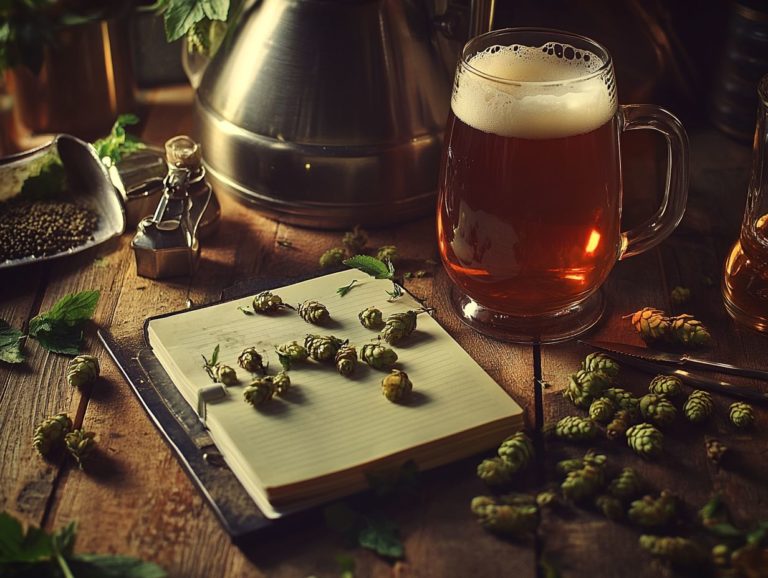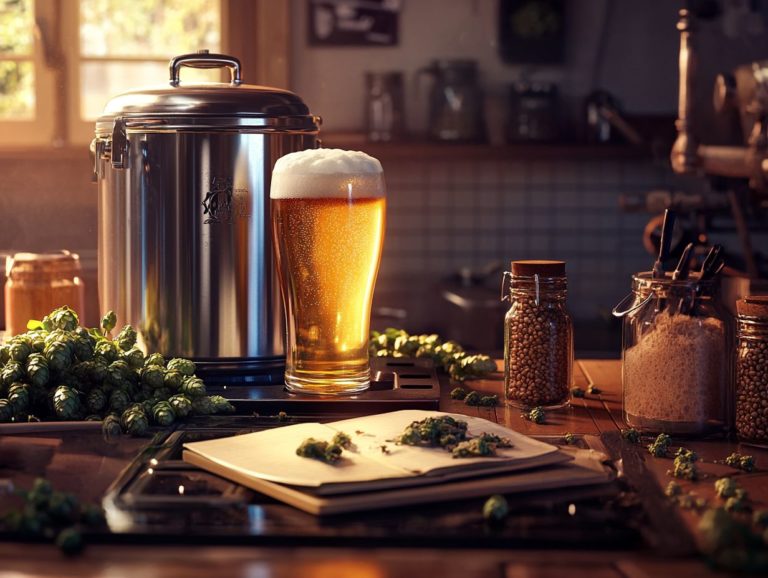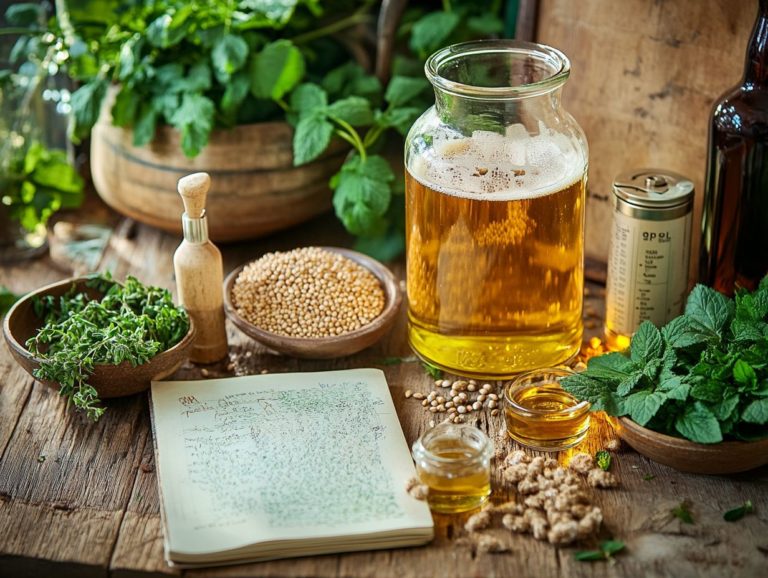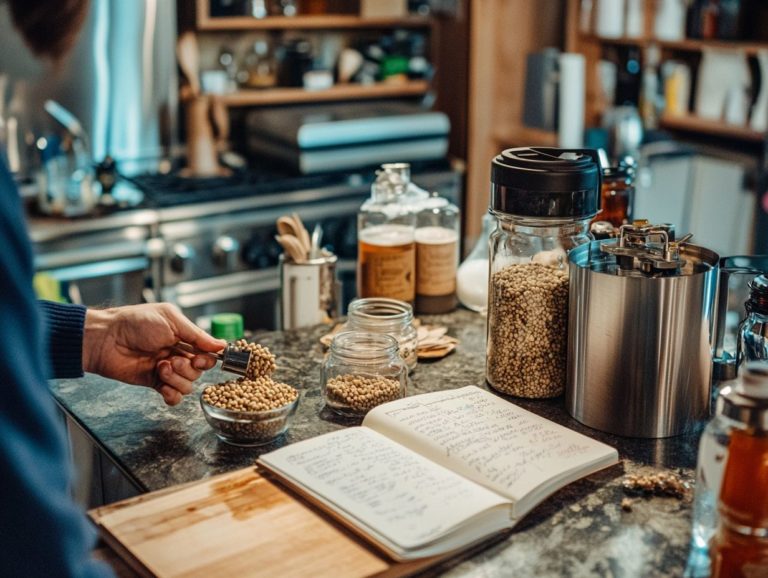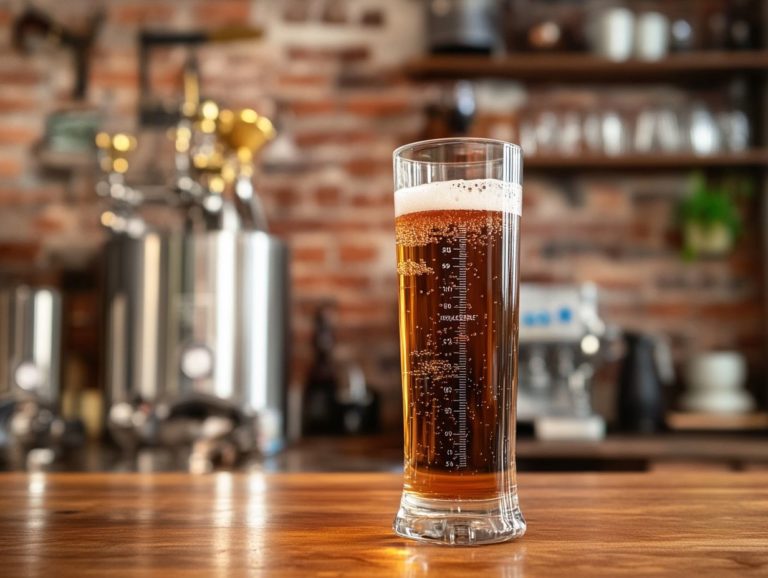5 Tips for Brewing Beer Styles from Around the World
Contents
- Brew Your Best Beer: A Guide to International Styles
- Key Takeaways:
- 1. Research the Specific Style
- 2. Understand the Ingredients and Techniques Used
- 3. Experiment with Local Ingredients
- 4. Pay Attention to Temperature and Timing
- What Are the Different Beer Styles from Around the World?
- What Are the Key Characteristics of Each Style?
- How Can One Incorporate Local Flavors into Their Brew?
- What Are the Common Mistakes to Avoid When Brewing International Styles?
- How Can One Perfect Their Brewing Technique for Different Styles?
- What Are Some Tips for Pairing International Beer Styles with Food?
- Frequently Asked Questions
- What are the benefits of brewing beer styles from around the world?
- What are some common mistakes to avoid when brewing international beer styles?
- How important is it to research the history and cultural significance of a beer style before brewing it?
- Are there any specific equipment or ingredients needed for brewing international beer styles?
- What are some tips for experimenting with and putting your own spin on international beer styles?
- How can I learn more about different beer styles from around the world?
Brew Your Best Beer: A Guide to International Styles
Brewing beer is a captivating journey that traverses cultures and continents. Each style presents a unique array of flavors and techniques waiting to be explored. Whether you find yourself as an aspiring homebrewer or a seasoned expert in competitive brewing, grasping the intricacies of various beer styles can truly elevate your craft.
This guide offers you five essential tips for brewing international styles, from delving into specific techniques and ingredients to experimenting with local flavors. You will discover how to refine your brewing methods, design a diverse beer menu, and expertly pair your creations with food. Each sip will tell a rich and engaging story.
Embark on this journey and unlock your brewing potential!
Key Takeaways:
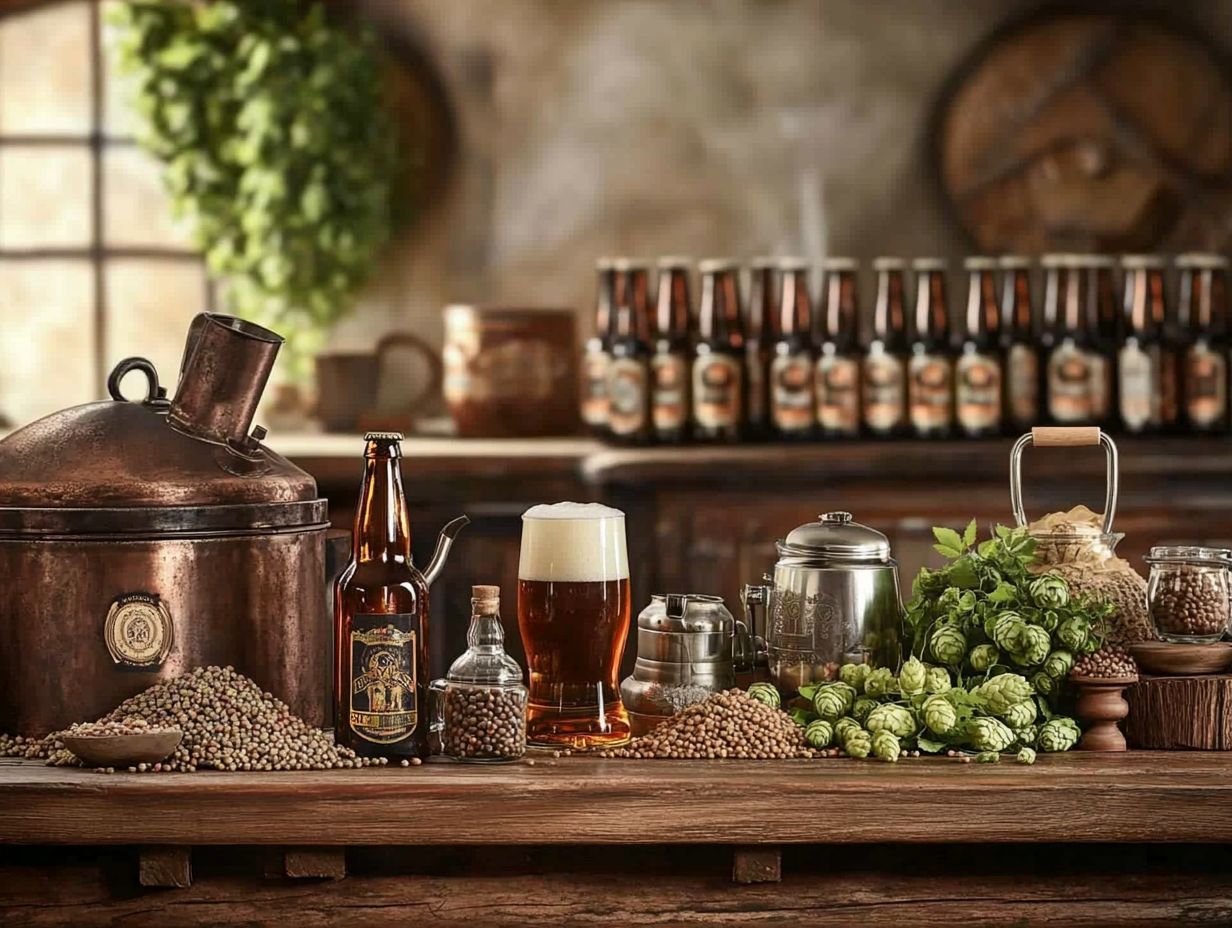
- Do your research to understand the specific characteristics of each beer style from around the world.
- Be familiar with the key ingredients and brewing techniques used in each style to ensure an authentic taste.
- Experiment with incorporating local ingredients to add unique flavors to your brew.
- Pay attention to temperature and timing to achieve the best results for each beer style.
- Don’t hesitate to seek help or feedback from experienced brewers when attempting new styles.
1. Research the Specific Style
To truly master the art of brewing, you must embark on a comprehensive exploration of specific beer styles. Dive into their historical roots and unique characteristics, along with the Beer Judge Certification Program (BJCP) guidelines that define each category. By grasping the nuances of various beer styles such as Ales, Lagers, Sours, and Wheat Beer you can craft your creations with greater precision and intention.
This research goes beyond just ingredients; it encompasses the brewing traditions that have shaped each style throughout its evolution.
Take Ales, for instance. They boast a rich history dating back to ancient civilizations. Often characterized by fruity flavors produced during fermentation and varying levels of bitterness, Ales reflect the regional ingredients and brewing techniques of their time.
Within the category of Ales, you have sub-styles like American Pale Ale, American Brown Ale, and Porter, each with its own distinctive characteristics.
On the other hand, Lagers, which emerged later, deliver a clean and crisp profile stemming from their colder fermentation process an embodiment of precision in brewing. Styles like light lagers and German-style lagers showcase the diverse flavor complexity possible within this category.
The BJCP guidelines serve as your roadmap for categorizing these styles. They ensure consistency in production while also celebrating creativity. As for Sours, their complex acidic flavors, forged by wild yeast and bacteria, narrate stories of experimentation and discovery. By understanding these profiles, you not only honor tradition but also open the door to innovative brewing practices.
2. Understand the Ingredients and Techniques Used
Understanding the ingredients and techniques used in brewing is essential for you. This is true whether you’re an aspiring beer judge or a craft beer enthusiast. These components directly influence the flavor profiles and sensory characteristics of the final product while adhering to style guidelines.
The fundamental ingredients of beer include malt, hops, yeast, and water, each playing a unique role in shaping your overall taste experience. Malt provides the sugars necessary for fermentation while imparting sweetness, color, and a range of flavors that can be biscuity or caramel-like.
Hops balance that sweetness with bitterness and introduce aromatic elements, adding delightful floral, citrus, or earthy notes to the mix. The strong hop bitterness in IPAs exemplifies how hops can define a beer s character.
Yeast transforms sugars into alcohol, contributing unique flavors. Bottom-fermenting yeast strains typically yield cleaner, crisper beers, while top-fermenting yeasts produce fruitier, more complex profiles.
Various brewing techniques, such as dry hopping (a method where hops are added after fermentation to enhance aroma) or barrel aging, can further elevate the final product, allowing the craftsmanship to shine through in every pour you savor. Techniques like these can be found in Gordon Strong s “Modern Homebrew Recipes” by Brewers Publications.
3. Experiment with Local Ingredients
Don’t miss the chance to utilize local ingredients this can elevate your craft beer to new heights, allowing you to infuse your brews with unique flavors that truly reflect your geographical region and brewing traditions. This is where homebrew kits can be particularly useful for incorporating local elements.
This approach not only enhances the taste of your beer but also fosters a deeper connection between you, the drinker, and your local community. For instance, by incorporating distinctive local hops like the Cascade from Oregon, you can introduce floral and citrus notes, while regional malts can provide a rich and complex backbone to your brew.
Adding adjuncts such as wildflowers or locally foraged fruits can bring an exciting twist to your creations. Many breweries source these ingredients from nearby farms, farmers’ markets, or specialized suppliers, supporting local agriculture while ensuring freshness. This not only enhances flavor complexity but also strengthens your connection to the community.
By embracing these native elements, you can explore diverse flavor profiles and craft distinctive beers that narrate the story of their origins. Consider brewing with regional malts, wild yeast, or even local spices to add more layers to your beer s background.
4. Pay Attention to Temperature and Timing
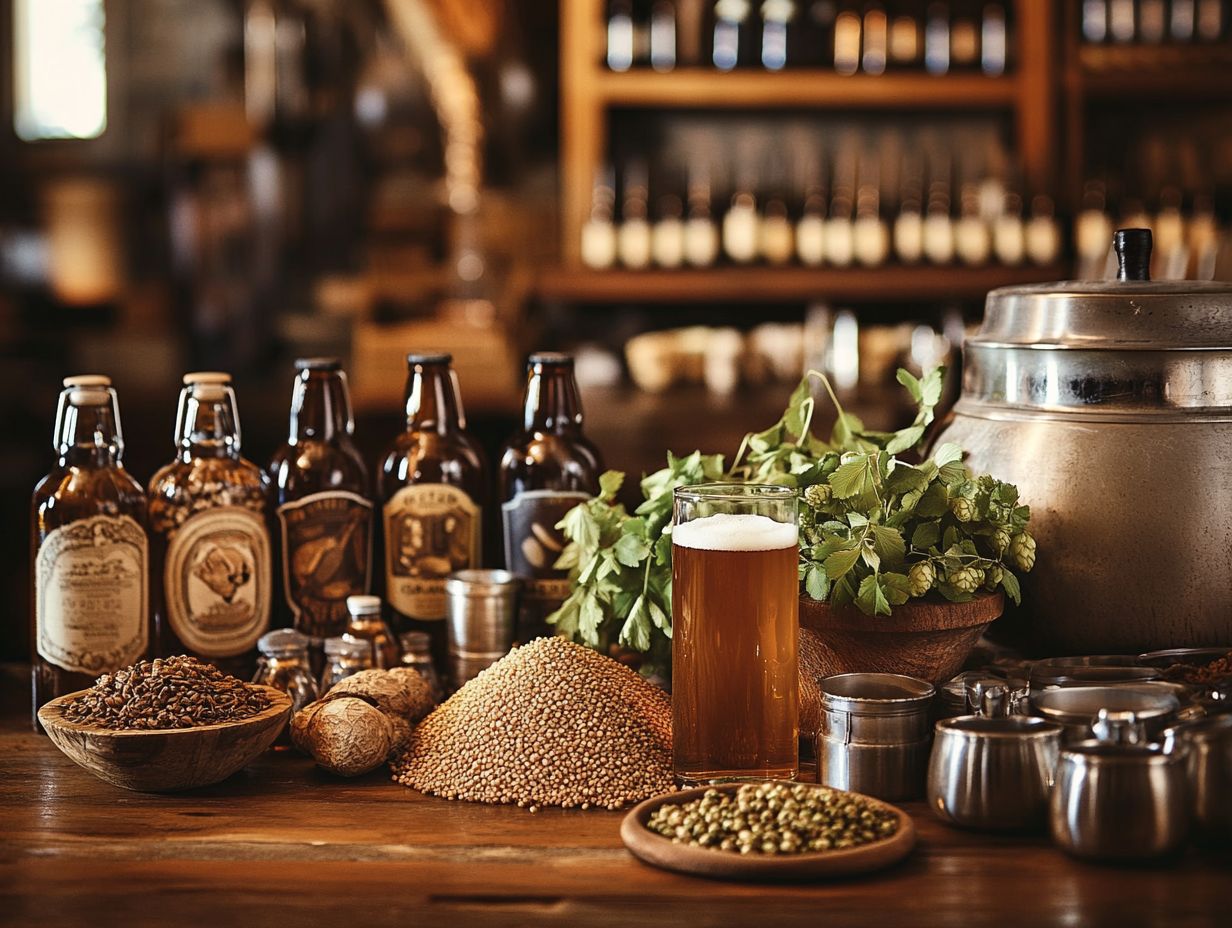
In the realm of brewing, it’s essential for you to pay meticulous attention to temperature and timing. These elements are pivotal in shaping both the fermentation process and the final flavor profile of your beer. This is particularly important when brewing historical styles or experimenting with new recipes.
You ll find that different yeast strains thrive at varying temperatures; some prefer cooler conditions, while others flourish in warmth to fully activate their fermentation. For example, during the primary fermentation stage, keeping ale yeast within an optimal temperature range can result in rich, fruity flavors. Conversely, lager yeast often demands cooler temperatures to achieve that clean, crisp finish you might be aiming for.
Control the timing of temperature changes to prevent off-flavors and keep your brew delightful. To elevate your brewing experience, consider utilizing temperature-controlled fermentation chambers or even simple techniques like water baths with ice packs. These methods can help you create the ideal environment for your yeast, ultimately leading to a superior beer that reflects your intentions as a brewer. Always remember, precise control over the brewing process can set your beer apart in competitive brewing.
5. Don’t Be Afraid to Ask for Help or Feedback
Engaging with the brewing community and actively seeking help or feedback is essential for you as an aspiring brewer. Not only does this enhance your knowledge, but it can also pave the way for recognition in beer competitions and brewing awards. Being involved in the community also helps you stay updated on beer evolution and trends.
Joining local or online brewing groups presents a fantastic opportunity for you to share your experiences and learn from others. These gatherings often feature beer tastings, where you can explore a diverse array of flavors and styles, ultimately broadening your palate. These communities provide excellent beer recommendations and insights into the latest brewing techniques.
Receiving constructive criticism from seasoned judges is invaluable. Their insights will significantly refine your brewing techniques and recipe development. Embracing these learning experiences deepens your appreciation for the craft while fostering lasting connections within the vibrant brewing community.
What Are the Different Beer Styles from Around the World?
Beer styles from around the world present a captivating tapestry of brewing traditions, each one boasting unique characteristics and flavor profiles that reflect their cultural heritage and local ingredients. From the strong hop flavor in American Pale Ales to the refreshing crispness of German-style lagers and the intricate complexity of Belgian beers, the diversity on offer is truly remarkable. Consider exploring styles like American Wheat Ale or Amber Ale for different brewing experiences.
This diversity not only showcases the creativity of brewers but also honors the historical practices that have shaped these styles over centuries. For example, the specific yeasts employed in Belgian brewing yield a vast array of flavors, ranging from fruity and spicy to earthy. In contrast, Germany s famous purity laws have produced lagers that are exceptionally clean and well-balanced. Helles, a classic German lager, exemplifies this purity with its light malty profile.
Every region, with its unique climate and available resources, plays a crucial role in crafting these distinctive brews. This means that with each sip, you may discover a rich narrative woven from the history, culture, and agricultural practices of its origin. Many historical styles like Lambic, a traditional Belgian beer that’s often fruity, and Gose, a sour beer that typically has a salty taste, offer a glimpse into ancient brewing traditions and regional specialties.
What Are the Key Characteristics of Each Style?
Each beer style presents key characteristics that define its sensory profile, ranging from the strong hop flavor in IPAs to the intricate flavors of robust stouts. This ensures that every sip delivers a unique tasting journey.
Take pilsners, for example. Their light and crisp nature is often elevated by floral and herbal notes, making them exceptionally refreshing, especially on a warm day. Another example is Helles, a German-style lager known for its light malty sweetness and subtle hop aroma.
On the other hand, a Belgian witbier may showcase a cloudiness stemming from its wheat base, complemented by delightful hints of citrus spices that make it incredibly approachable. American Wheat Ales offer a different take with their clean, crisp profiles and subtle hop presence.
Then there’s the rich amber hue of amber ales, offering a balanced malt sweetness paired with gentle bitterness, making them appealing to a broad spectrum of palates.
Each of these styles not only boasts its own distinct flavor and aroma profile but also invites you into a world of brewing traditions and innovative techniques, enriching your overall experience. Whether it’s the dark malts used in robust stouts or the unique fermentation characteristics of sour beers, each style offers a unique journey.
Explore these styles at your local brewery!
How Can One Incorporate Local Flavors into Their Brew?
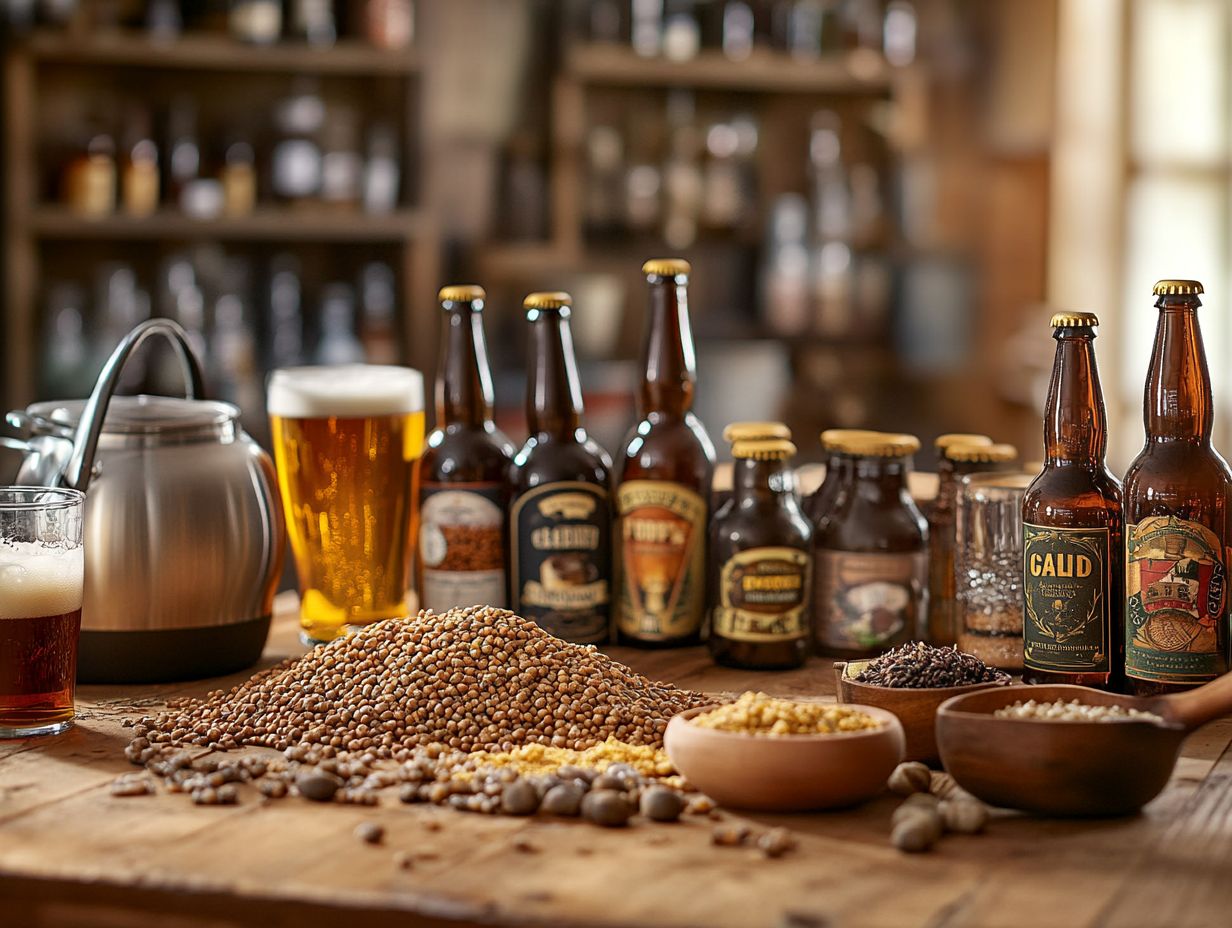
Incorporating local flavors into your brewing can truly elevate the taste and authenticity of your beer. This allows you to experiment with indigenous ingredients that enhance the overall flavor complexity.
Sourcing these local ingredients is often as simple as visiting farmers’ markets. You can also forge relationships with local farmers or participate in community-supported agriculture programs. By actively engaging with your community, you can uncover unique flavors, such as locally grown hops, seasonal fruits, or even aromatic herbs that can transform traditional recipes in remarkable ways.
For example, imagine adding local citrus fruits like oranges or grapefruits to a pale ale. The refreshing zest they provide beautifully complements the hops’ bitterness. This not only showcases the region’s agricultural bounty but also results in a beer that embodies the local character, creating a product that resonates with consumers seeking genuine experiences.
Ultimately, integrating local ingredients can lead to exciting and innovative brews that are sure to impress your friends!
What Are the Common Mistakes to Avoid When Brewing International Styles?
When you embark on the journey of brewing international styles, it’s essential to be mindful of common pitfalls. These could jeopardize your final product, such as overlooking fermentation characteristics or miscalculating ingredient ratios.
These missteps can lead to unwelcome variations in flavor, aroma, and overall consistency. For instance, many brewers might underestimate the significance of yeast selection, which is crucial for developing the distinctive esters and phenols that define specific international beers.
Understanding the specific water profiles necessary for different styles can greatly enhance your brewing results. Local water chemistry influences the extraction of flavors from malts and hops. Taking the time to research and adopt techniques from brewers who specialize in these styles can significantly boost your chances of success.
By doing so, you will appreciate the complexities involved in crafting authentic beers.
How Can One Perfect Their Brewing Technique for Different Styles?
Perfecting your brewing techniques for different beer styles demands a thorough understanding of the unique requirements for each type. This includes adjusting your brewing process to match specific flavor profiles and mastering fermentation techniques.
To truly refine these skills, you should adopt a mindset of practice and iteration. Each batch is a chance to learn and improve your methods. For example, when brewing a lager, temperature control is paramount; maintaining consistent fermentation temperatures can dramatically affect the final taste.
Conversely, experimenting with hop additions in an IPA can unveil distinct flavor nuances that elevate the overall experience. Keeping a detailed record of each brew will provide valuable insights, making it easier for you to replicate successes and troubleshoot any challenges that arise.
Ultimately, a blend of patience and curiosity will set you on the path to achieving those desired flavors and enhancing your homebrewing skills.
What Are Some Tips for Pairing International Beer Styles with Food?
Pairing international beer styles with food can take your dining experience to a whole new level! Understanding the unique flavor profiles of different beers allows you to make thoughtful recommendations that enhance both the beer and the meal.
For example, imagine a crisp German Pilsner with its light malt sweetness and floral hop notes. It pairs wonderfully with seafood dishes like grilled shrimp or fish tacos. The beer’s carbonation expertly cuts through the richness of the meal, creating a delightful balance.
You might also enjoy a rich and malty stout, which complements desserts like chocolate cake or creamy tiramisu beautifully. The beer’s roasted flavors resonate with the deep cocoa notes in the dish, making for a harmonious pairing.
By recognizing these specific pairings, you can create a symphony of flavors that not only highlights the distinct characteristics of the beer but also amplifies the overall dining experience. This transforms a simple meal into a memorable culinary adventure!
Frequently Asked Questions
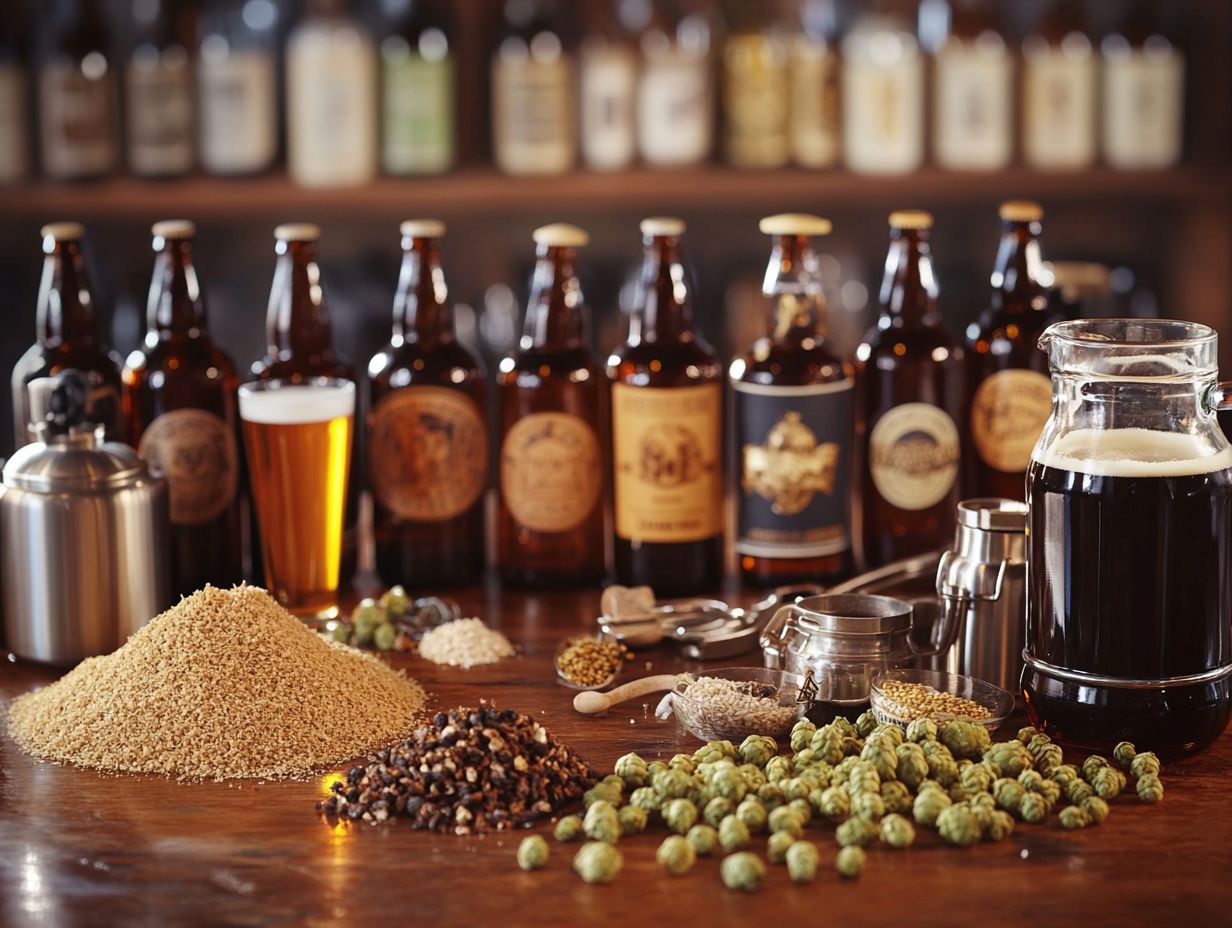
What are the benefits of brewing beer styles from around the world?
Brewing beer styles from different countries can help you try new flavors and techniques.
What are some common mistakes to avoid when brewing international beer styles?
Some common mistakes include not using the correct ingredients or not following the specific brewing process for that style of beer.
How important is it to research the history and cultural significance of a beer style before brewing it?
Researching the history and cultural significance of a beer style can give you a better understanding of its origins. This knowledge helps you pay homage to its traditions while brewing.
Are there any specific equipment or ingredients needed for brewing international beer styles?
Yes, some beer styles may require special equipment or ingredients that are not commonly used in other styles. It’s crucial to research and gather all necessary items before starting the brewing process.
What are some tips for experimenting with and putting your own spin on international beer styles?
Start by mastering the traditional recipe before making any modifications. Then, consider adding unique ingredients or processes that complement the style while still staying true to its roots.
How can I learn more about different beer styles from around the world?
One way to learn more is by attending beer festivals or joining a local homebrewing club. You can also research online or read books on the history and techniques of different beer styles.

